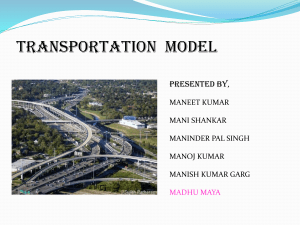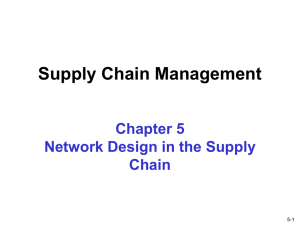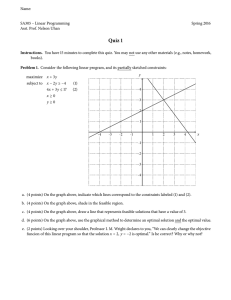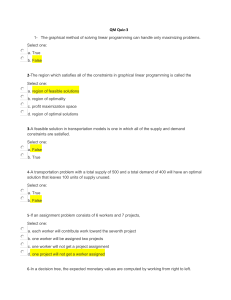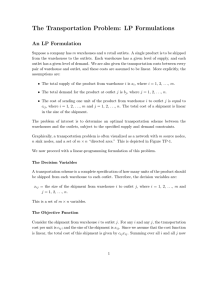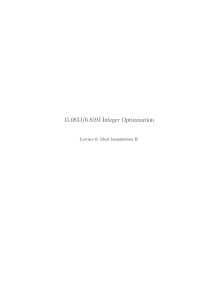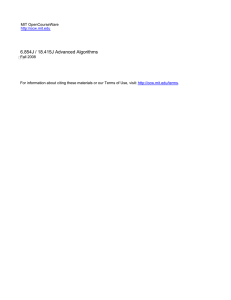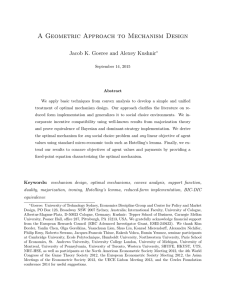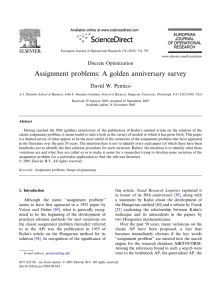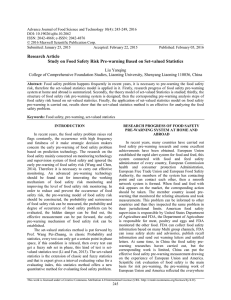Lecture 15 Transportation Problem : Introduction ana mathematical formaulation
advertisement
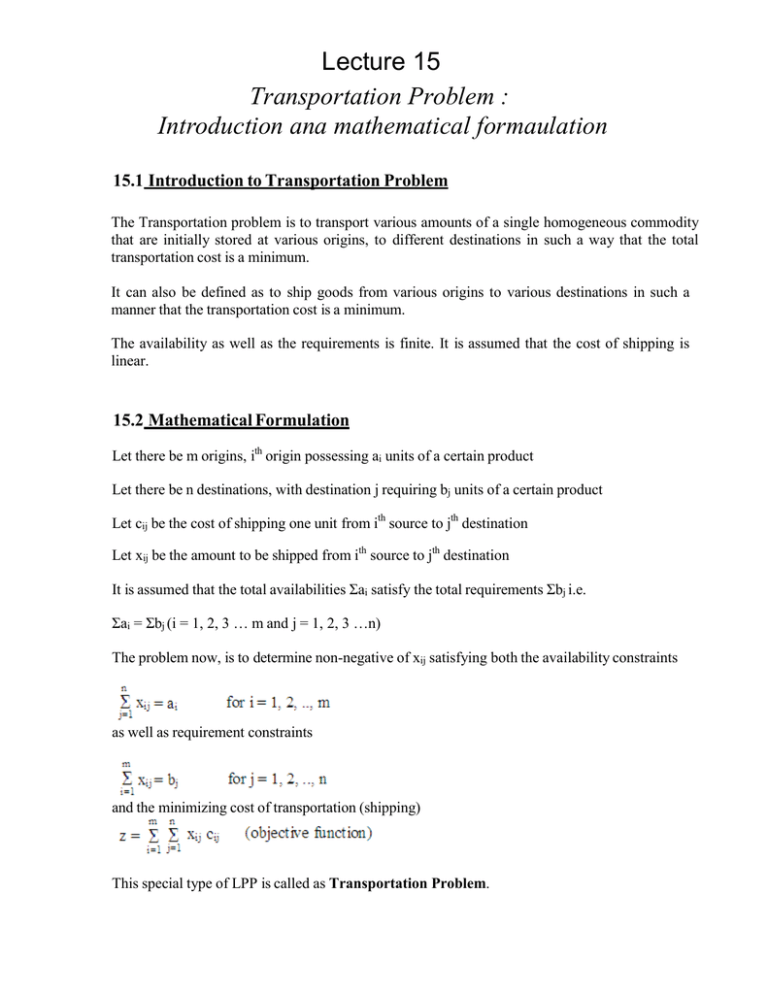
Lecture 15 Transportation Problem : Introduction ana mathematical formaulation 15.1 Introduction to Transportation Problem The Transportation problem is to transport various amounts of a single homogeneous commodity that are initially stored at various origins, to different destinations in such a way that the total transportation cost is a minimum. It can also be defined as to ship goods from various origins to various destinations in such a manner that the transportation cost is a minimum. The availability as well as the requirements is finite. It is assumed that the cost of shipping is linear. 15.2 Mathematical Formulation Let there be m origins, ith origin possessing ai units of a certain product Let there be n destinations, with destination j requiring bj units of a certain product Let cij be the cost of shipping one unit from ith source to jth destination Let xij be the amount to be shipped from ith source to jth destination It is assumed that the total availabilities Σai satisfy the total requirements Σbj i.e. Σai = Σbj (i = 1, 2, 3 … m and j = 1, 2, 3 …n) The problem now, is to determine non-negative of xij satisfying both the availability constraints as well as requirement constraints and the minimizing cost of transportation (shipping) This special type of LPP is called as Transportation Problem. 15.3 Tabular Representation Let ‘m’ denote number of factories (F1, F2 … Fm) Let ‘n’ denote number of warehouse (W1, W2 … Wn) W→ F ↓ F1 F2 . . Fm Required W→ F ↓ F1 F2 . . Fm Required W1 W2 … Wn c11 c21 . . cm1 b1 c12 c22 . . cm2 b2 … … . . … … c1n c2n . . cmn bn W1 W2 … Wn x11 x21 . . xm1 b1 x12 x22 . . xm2 b2 … … . . … … x1n x2n . . xmn bn Capacities (Availability) a1 a2 . . am Σai = Σbj Capacities (Availability) a1 a2 . . am Σai = Σbj In general these two tables are combined by inserting each unit cost cij with the corresponding amount xij in the cell (i, j). The product cij xij gives the net cost of shipping units from the factory Fi to warehouse Wj. 15.4 Some Basic Definitions Feasible Solution A set of non-negative individual allocations (xij ≥ 0) which simultaneously removes deficiencies is called as feasible solution. Basic Feasible Solution A feasible solution to ‘m’ origin, ‘n’ destination problem is said to be basic if the number of positive allocations are m+n-1. If the number of allocations is less than m+n-1 then it is called as Degenerate Basic Feasible Solution. Otherwise it is called as NonDegenerate Basic Feasible Solution. Optimum Solution A feasible solution is said to be optimal if it minimizes the total transportation cost.

